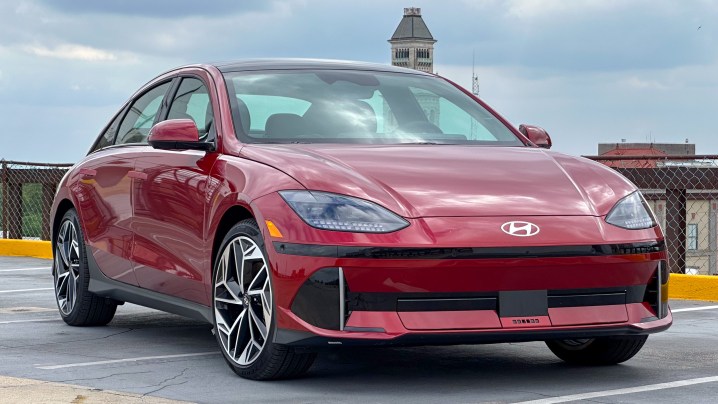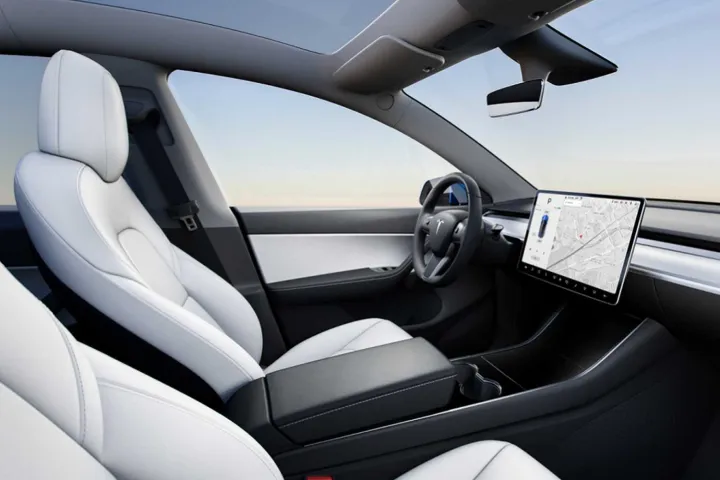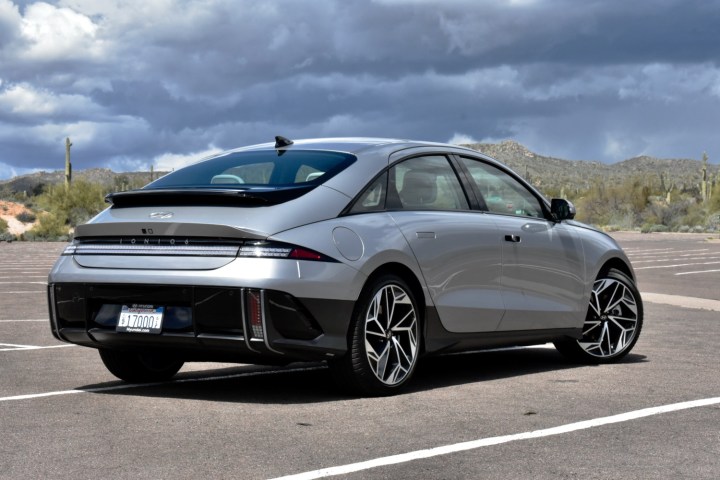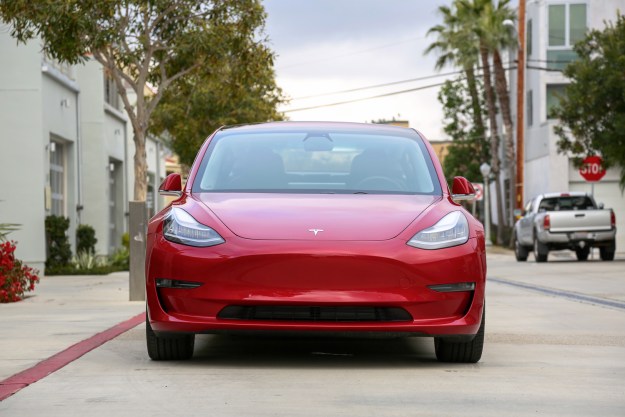There are finally some more electric sedan options. For years, the Tesla Model 3 was really the only good electric sedan that comes at a reasonable price — until, Hyundai recently launched the Ioniq 6. The Ioniq 6 certainly takes some cues from the larger Ioniq 5, but is smaller and sleeker, with a design seemingly inspired by the Porsche 911.
But the Tesla Model 3 is still clearly an excellent option for those looking for an electric car, and who don’t want a larger crossover. Which is better? Here’s a look.
Design
The exterior design of the Tesla Model 3 and Hyundai Ioniq 6 is quite different. If you’ve seen a Tesla car before, then you’ll immediately recognize the Model 3 — it looks largely like a slightly different version of every other Tesla (except the Cybertruck).

That, of course, isn’t necessarily a bad thing. The Model 3 offers sleek lines and a modern appearance overall, and if you like the look of other Tesla cars, you’ll like the look of the Model 3. It’s available in a number of colors too — though if you want any color other than Midnight Silver Metallic, you’ll have to pay extra.
The Ioniq 6 is pretty sleek as well. As mentioned, the design of the car is inspired by the Porsche 911, and it shows. The car has a swooping roofline, with a small flick of a spoiler at the back, and curved lines throughout. It’s quite a good-looking car.
Winner: Tie
This one is truly a matter of taste.
Interior and tech
The differences between these two cars extend to their interiors. The Model 3 follows Tesla’s ethos of minimalism, offering a big 15.4-inch display in the center, and not really much else. There’s no instrument cluster, and you can barely see the air vents in the car. Everything is controlled through the center screen. The screen displays Tesla’s operating system, which is better than most other car software. The Model 3 offers other touches to the interior, like a wireless phone charger and vegan leather seats.

The interior of the Ioniq 6 is a little busier on the inside. The car offers a smaller display, coming in at 12.3 inches. That, however, is coupled with a second 12.3-inch screen that serves as the digital instrument cluster. You’ll also get capacitive buttons for the climate controls, as well as accent lighting throughout, which looks quite nice. The Ioniq 6 offers the same infotainment system as the Ioniq 5, which is relatively easy to navigate — but still not great, and not as good as Tesla’s operating system. Thankfully, however, it supports CarPlay and Android Auto.
Winner: Tie
If you want a familiar layout, choose the Ioniq 6. If you want the cleanest possible aesthetic, choose the Tesla.
Performance
Both the Model 3 and the Ioniq 6 are electric cars, and they’ll both offer that immediate EV response — making for a zippy driving experience overall. But they don’t quite offer the same performance.

The Tesla Model is is actually available in a few different variations. There’s the standard Model 3, which delivers a top speed of 140 miles per hour, can reach 60 mph in 5.8 seconds, and is rear-wheel drive only. Then there’s the Model 3 Long Range, which improves the acceleration to 60 mph to only 4.2 seconds and is a dual-motor car with all-wheel drive. Last but not least is the Model 3 Performance, which has a top speed of 162 mph, and reaches 60 mph in only 3.1 seconds. It’s also an all-wheel drive model. All of the models are pretty quick, however the Model 3 Performance is obviously ahead of the rest.
The Ioniq 6 is also available in a number of different models. There’s the SE Standard Range, the SE, the SEL, and the Limited. Unfortunately, Hyundai only officially quotes one 0-60 time — 5.1 seconds, for the top-spec all-wheel drive models, which deliver 320 horsepower. Safe to say, if that’s the fastest variant of the Ioniq 6, then the Model 3 is the higher-performing car overall.
Winner: Tesla Model 3
Range and charging
Perhaps more important than basic performance is the range and charging tech on offer by the cars.
First, the Model 3. The range of the Model 3 varies from 272 miles for the basic rear-wheel drive model to 333 miles for the Model 3 Long Range, which has a larger battery. The Model 3 Performance boasts 315 miles of range. The Model 3 offers a charging speed of up to 250kW, and Tesla says that you’ll get 200 miles of range in 15 minutes — though that’s really only under ideal conditions.

The Ioniq 6 changes that a little. The shortest-range is the Limited model, which is an all-wheel-drive model with a smaller battery. The longest-range model, however, is the SE Long Range, which may not be all that fast, but has a range of an impressive 361 miles. That’s higher than even the longest-range Model 3. The Ioniq 6 charges superfast too. It supports charging at 350kW, which allows the car to charge from 10% to 80% in under 18 minutes — recouping 65 miles in five minutes. Again, however, this is only under ideal conditions.
Winner: Hyundai Ioniq 6
Hyundai offers both longer overall range and significantly faster charging, which makes this one no contest.
Pricing and availability
Both the Model 3 and the Ioniq 6 are available for purchase right now. The Model 3 starts at $40,240 for the base model, ranging up to $53,240 for the Performance.
The Hyundai Ioniq 6, on the other hand, starts at $41,600 for the SE Standard Range model, ranging up to $52,600 for the Limited model.
The price points are very similar, but if you want the longest-range model, you’ll pay less for the Ioniq 6 SE, at $45,500, compared to $47,240 for the Model 3 Long Range.
Winner: Hyundai Ioniq 6
The difference may be small, but for the model most customers will desire, Hyundai just edges out Tesla.
Overall winner: Hyundai Ioniq 6
Both the Tesla Model 3 and the Hyundai Ioniq 6 are great cars, and should both be considered by anyone in the market for an electric sedan. I find the Ioniq 6 to be slightly more compelling, given the better range and what I find to be the sleeker design. That said, you can’t really go wrong with either the Model 3 or the Ioniq 6.
Editors' Recommendations
- New Model 3 ‘takes out the baby fat,’ Tesla designer says in new video
- Move aside, Tesla. The Hyundai Ioniq 6 is the best electric sedan for the masses
- Tesla’s Model 3 is reportedly heading for a redesign
- Hyundai launching all-electric brand, with three models on the way
- Tesla upgrades California-made Model 3 with a wireless charging pad, USB-C ports


